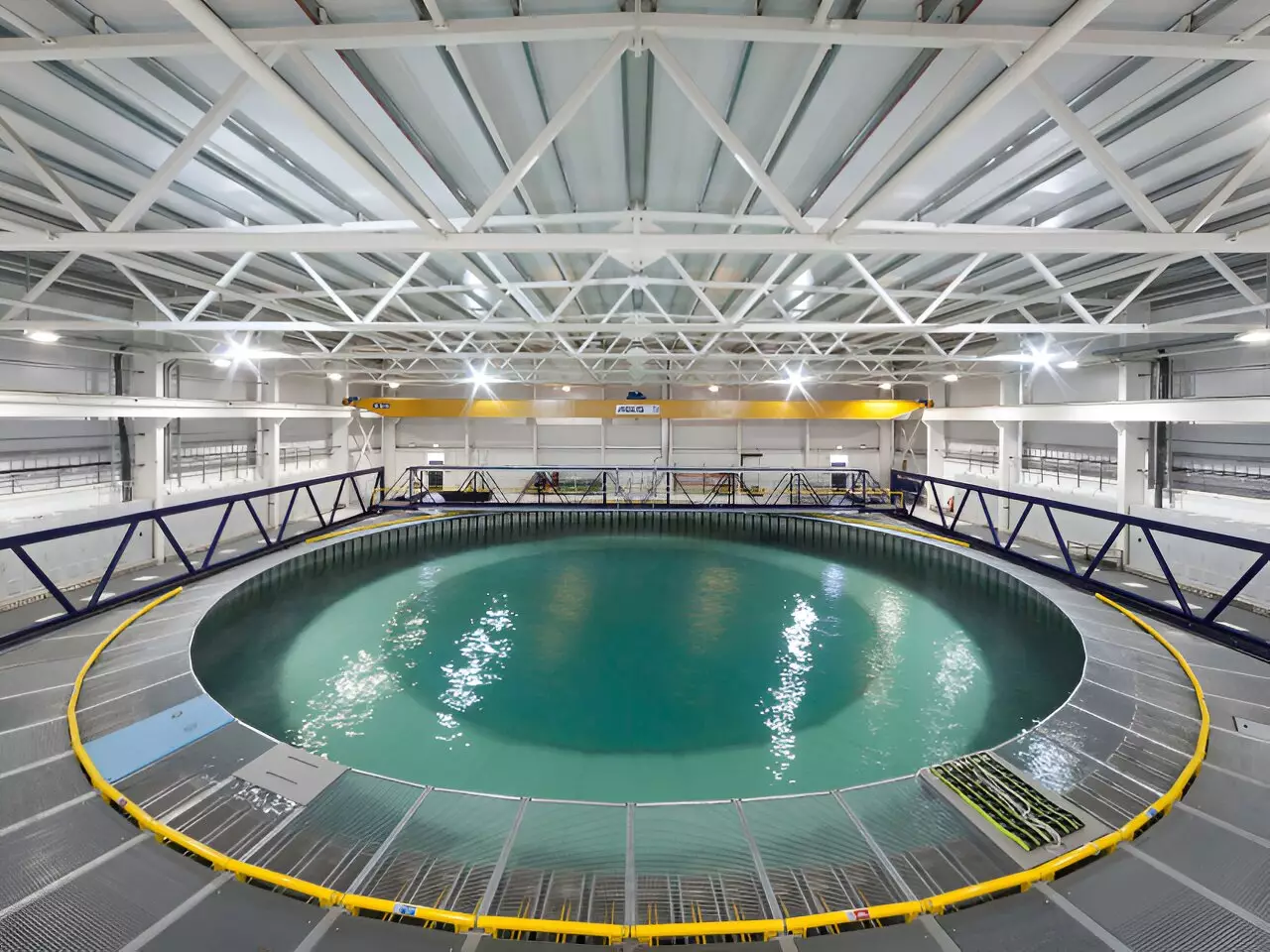The behavior of ocean waves has long fascinated scientists and the general public alike, yet the intricacies of wave dynamics remain largely unexplored. A recently published study has dramatically shifted our understanding of waves, revealing that under particular conditions, these natural phenomena can be considerably more extreme and multifaceted than previously acknowledged. The implications of this study are not just academic; they reverberate into practical applications, influencing everything from offshore engineering to climate modeling, fundamentally reshaping our grasp of oceanic processes.
Traditionally, research has been grounded in the premise that waves are predominantly two-dimensional entities, moving in a single direction with predictable patterns of behavior. This simplified viewpoint, while pragmatic, falls short of accounting for the ocean’s dynamic nature. The groundbreaking study led by a collaborative team comprising Dr. Samuel Draycott from The University of Manchester and Dr. Mark McAllister from the University of Oxford challenges this long-standing belief. Their research uncovered that under multidirectional wave interactions, water waves may become up to four times steeper than thought feasible.
The study posits that these three-dimensional waves can grow considerably larger before reaching a breaking point compared to their two-dimensional counterparts. Dr. Draycott emphasized that multidirectional waves have the capacity to continue escalating in height even post-breaking—a revelation that starkly contrasts our conventional understanding of waves. The study highlights a striking phenomenon: waves that “cross” each other can engender even more extreme wave conditions, particularly in tumultuous settings like hurricanes, where rapid shifts in wind direction create a maelstrom of wave activity.
The significance of these findings cannot be overstated. The traditional designs for marine structures, often based on two-dimensional wave models, may now be inadequate. Professor Ton van den Bremer of TU Delft pointed out that upon breaking, conventional waves form white caps and cease to grow. In contrast, three-dimensional waves defy this expectation, hinting at the urgency for a reevaluation of safety measures in offshore construction, including wind turbines and oil rigs.
Acknowledging the three-dimensional nature of ocean waves can lead to better, more robust designs. Dr. McAllister, associated with both the University of Oxford and Wood Thilsted Partners, underscored how the ignorance of wave 3D properties could jeopardize safety and reliability in marine structures due to underestimating extreme wave heights. As the ocean demonstrates its more complex characteristics, it beckons a rethinking of our designs to ensure they can withstand the forces of nature.
Beyond engineering, this new understanding of wave dynamics has profound implications for various oceanic processes. Wave breaking is not merely an aesthetic character of the sea; it plays a monumental role in the exchange of gases between the ocean and the atmosphere. For instance, breaking waves facilitate the absorption of carbon dioxide, directly impacting climate change scenarios. Furthermore, the transport of marine particles, including phytoplankton and microplastics, hinges upon wave behaviors, making this study crucial for environmental science.
Dr. Draycott further elaborated on the broader implications, suggesting that recognizing the multifaceted nature of ocean waves could enhance our understanding of ecological systems and their responses to changing environmental conditions. As climate change accelerates, understanding these interactions affords researchers and policymakers critical insights for mitigating adverse effects on marine ecosystems.
In pursuit of elucidating the eccentric behaviors of ocean waves, researchers have utilized advanced methodologies for studying wave mechanics. The team’s previous endeavors were highlighted by their efforts to recreate the infamous Draupner freak wave, showcasing their commitment to pushing the envelope in ocean wave research. The newly developed three-dimensional wave measurement techniques, employed in the FloWave wave basin at the University of Edinburgh, represent a leap forward in replicating and studying real-world conditions at a laboratory scale.
Dr. Thomas Davey, Principal Experimental Officer at FloWave, noted that harnessing multidirectional capabilities in a controlled environment enables scientists to carefully dissect wave-breaking behaviors that had seemingly eluded prior studies. The advancements in technology facilitate an enriched understanding of ocean dynamics, providing a clearer lens through which to view this complex natural phenomenon.
The revelations from this landmark study cement our need to embrace a more nuanced perspective of ocean waves. As researchers dive deeper into these multidimensional complexities, the implications extend far beyond the realms of academia. They beckon a vital re-examination of structures that interact with the ocean and illuminate critical processes that underpin our marine ecosystems. Our understanding of the sea is poised for a transformation, challenging existing paradigms and heralding a new era of oceanographic insights. As our world grapples with environmental changes, recognizing the multifaceted behavior of ocean waves will be crucial for developing sustainable solutions for the challenges ahead.

